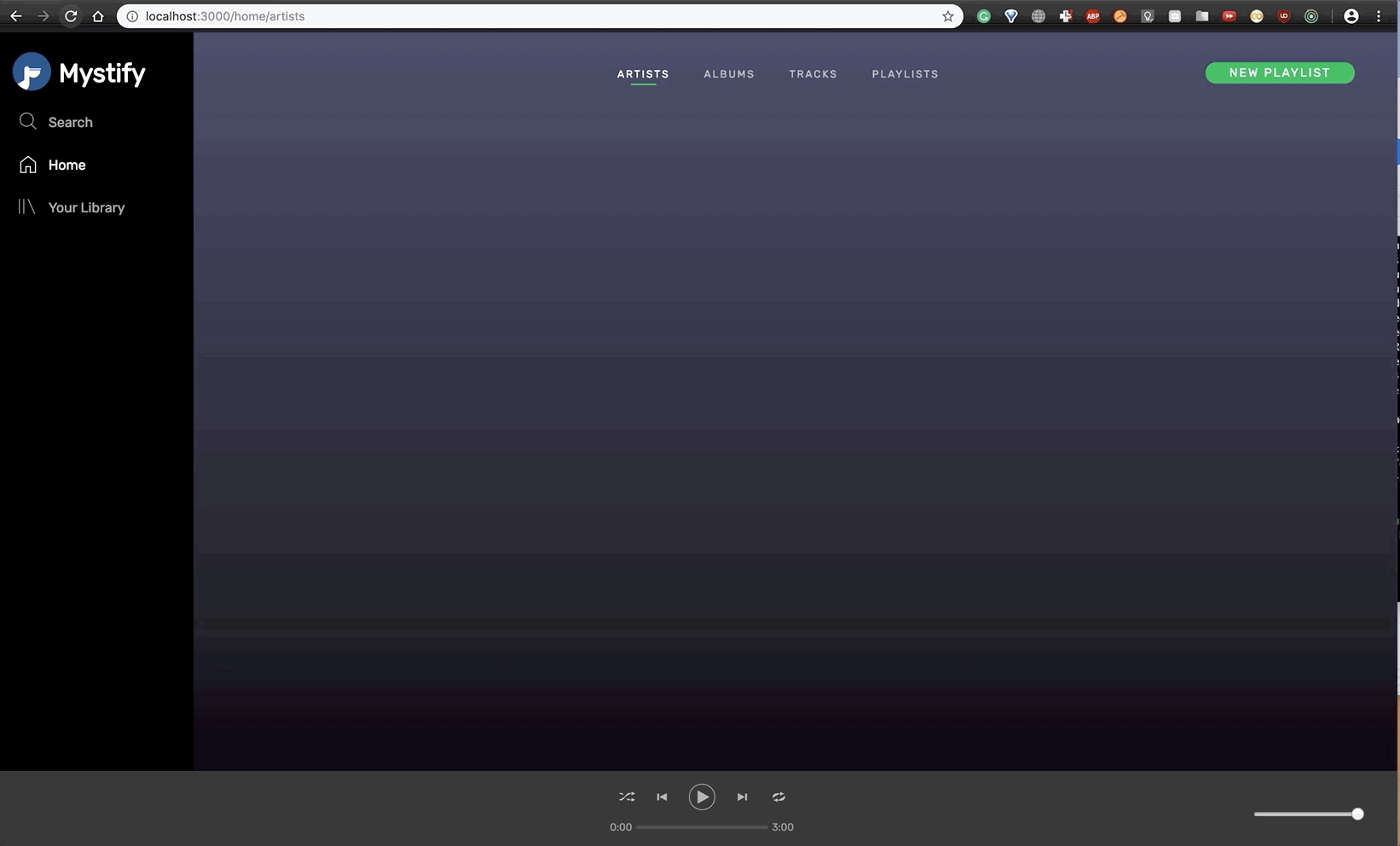A fullstack clone of Spotify built in React, Redux, Node, and Express along with MongoDB.
Coming soon!
Coming soon!
Code Snippet HERE
JWT is a library on NPM that provides a clean, declarative way to use JSON Web Tokens. When a user is logged in, ...
JWT is a library on NPM that provides a clean, declarative way to use JSON Web Tokens. When a user is logged in, ...
JWT is a library on NPM that provides a clean, declarative way to use JSON Web Tokens. When a user is logged in, ...
JWT is a library on NPM that provides a clean, declarative way to use JSON Web Tokens. When a user is logged in, ...
When a Track component is created, it adds itself to the newPlayQueue. The newPlayQueue is an array that contains the song order for all tracks on the current page*. The newPlayQueue is used exclusively to know the track order of songs on pages that the user has navigated to, but has not yet clicked on a track to play.
Once a user clicks on a track to play, the newPlayQueue is merged into the playQueue, the active playQueue from which all currently playing songs know their order.
if (clicked && this.props.newPlayQueue.length > 0) {
//...
this.props.replacePlayQueue(newPlayQueue);
}
If the playQueue has elements in it, they are overwritten by the newPlayQueue.
const playQueueReducer = (state = [], action) => {
Object.freeze(state);
switch (action.type) {
//...
case (REPLACE_PLAY_QUEUE):
return action.newPlayQueue;
default:
return state;
};
};
The newPlayQueue is turned back into an empty array, to be filled upon a visit to a new page. As well, whenever an Artist, Album, or HomeTrack page leave the DOM, they clean up their tracks and newPlayQueue slice of state.
componentWillUnmount(){
this.props.clearTracks();
this.props.clearNewPlayQueue();
}
These components clean up after themselves to ensure a fresh state ([]) for incoming tracks. In turn, these tracks create a newPlayQueue.
class Track extends React.Component {
componentDidMount() {
//...
const song = { title, albumImgURL, artist, song: new Audio(trackURL) }
this.props.addSongToNewPlayQueue(song);
this.setState({ song });
}
}
Holding these two arrays playQueue and newPlayQueue in state solved the annoying and difficult problem of maintaining a playQueue as a User navigates the pages as well as retaining the interactivity of the tracks on the current page to create a newPlayQueue if clicked.
const song = new Audio();
song.preload = 'none';
song.src = trackURL;
This ensures the song does not issue a network request until it is played. This saves the user from issuing too many conflicting network requests, as well as saves me money because I do not have my S3 Amazon AWS Bucket sending unnecessary data to each user.
Figure out why the uncaught in DOM Promise exception occurs. What we know: After switching pages, a track sometimes loses its trackURL, which causes no Audio element to be created. But where does that trackURL go? That is the million dollar question.
- Update ReadMe
- Erase the NewPlayQueue in ReadMe as we only have one PlayQueue
- Abstract out similar logic into Higher Order Components -> put into PlayQueue
- Show the abstracted DOM Editing logic.
- Explain the logic behind how Songs are tracked in Redux state
- Fix the volume bar to continue to work on new songs.
